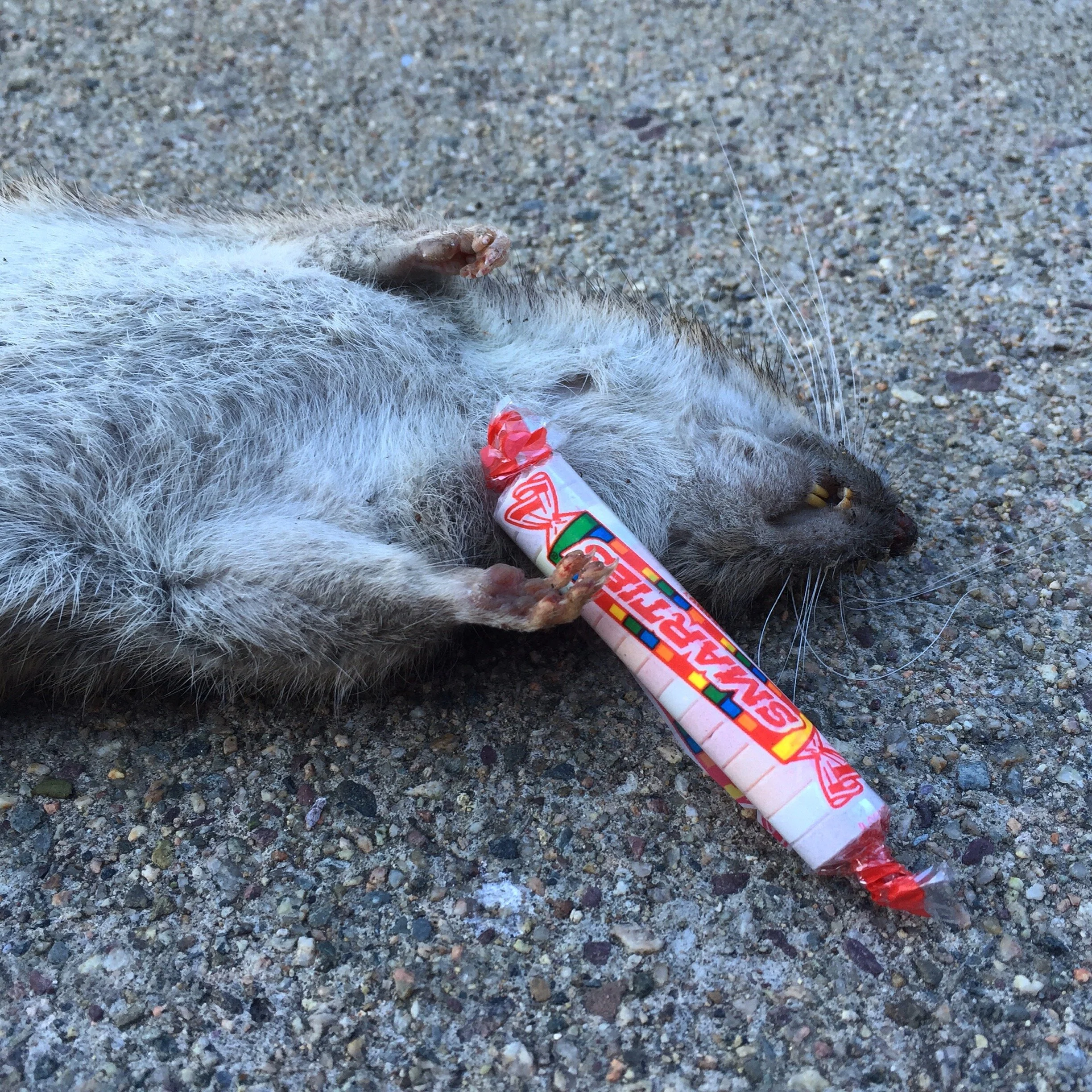Humor on Allston Streets
Since moving to Allston, Massachusetts, in September, I’ve been delighted by the use of public space for displays of humor. When I walk to the bank or the grocery store, I almost always see art or text on the street that makes me laugh. My amusement causes other passersby to look at what I’ve discovered, and then they start laughing, too. And that attracts even more people and more giggles and more chuckles. Community is built through the shared experience of this humor. Allston is notorious for being an area populated by college students, grad students, and young post-grads, so it’s natural that many people in my neighborhood have a similar cultural framework that begets a communal sense of humor.
The box, branded with an abstract “U2,” was on the side of the street, clearly trash. U2 is a band that I didn’t pay much attention to growing up; yes, Bono is a fantastic musician, but the band’s Christian undertones have never done anything for me. And besides, why would I want to listen to music my parents had playing in their cars when they picked me up from elementary school? I had all but forgotten about U2 until September 2014 when their album Songs of Innocence automatically appeared on my iPhone without any way to delete it. Like millions of others (and I’m sure thousands who now live in Allston), I was annoyed that valuable gigabytes of my phone’s memory were stolen by music I had no intention of listening to. Eventually, Bono apologized and Apple posted a guide of how to remove the album. But U2’s memory still remained tainted to many—hence why, two years later, someone was still salty enough to get out a Sharpie and write “SUCKS!” on a random cardboard box labeled with a “U2” that (probably) had nothing to do with the band. I saw several people take pictures of this box, and like me, I bet they wished they were the one who had used a Sharpie to write out what everyone else was thinking.
These two drawings are sketches of Minions, or the little creatures that first appeared in the animated movie Despicable Me in 2010. Although the movie is intended for children, it also become popular among young adults because of its incredible animation and the big names involved in the film’s production; Steve Carell voiced the film’s main character and Pharrell Williams produced, performed, or wrote every song on soundtrack. Those who have seen the movies understand that the humor in these drawings is entirely derived from irony. Minions communicate in gibberish and are always laughing and goofing off. Seeing“NOTHING LASTS FOREVER” and “DEATH?” written next to these mirthful characters—who don’t speak English—is hilarious because of the disparateness between the text and the nature of minions. It seems like the artist is playing a trick on people by drawing them in with the familiar image of a happy minion and then inverting that symbol with hopeless text that invites them to think about their own deaths. In effect, the artist created an emotional experience shared by those who understand the cultural references depicted in his or her art—you have to “get it” in order to find the humor in these pieces.
It’s possible this rat died with a roll of Smarties leaning against her body, but I’d like to think someone staged this scene as a type of cultural commentary about the nature of a young adulthood in Allston. Smarties were ubiquitous when I was a kid: given out by teachers as rewards, present by the horde after every trick-or-treating trip, and found in many summer camp care packages. Rats, on the other hand, I associate heavily with living in Allston, where I often see them scurrying across the sidewalk at night. Like the minion drawings and their dark accompanying text, the juxtaposition of candy from my childhood and the reality of rats in my adult life creates irony. In this scene, I also see a simile; like the dead rat now unable to eat the candy she would’ve loved to consume, I see Smarties and am reminded of a childhood I can only dream of having back—a time when I didn’t have to worry about paying bills, affording groceries, or dodging rats trying to scamper over my feet. Or perhaps, like many people living in Allston, I’ve been conditioned by nearly 20 years in an education system that’s encouraged me to read meaning into and think critically about everything I come in contact with, instead of just being able to see a dead rat next to a piece of candy. There’s definitely some humor in that, too.

